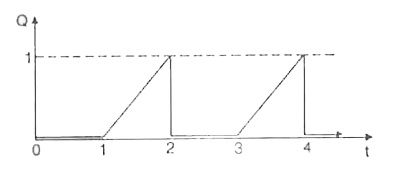Draw x → graph for zero acceleration.Solution in Gujrati
Step by step video & image solution for Draw x to graph for zero acceleration. by Physics experts to help you in doubts & scoring excellent marks in Class 11 exams.
Updated on:21/07/2023Topper's Solved these Questions
- MOTION IN A STRAIGHT LINE BOOK - KUMAR PRAKASHANCHAPTER - MOTION IN A STRAIGHT LINE EXERCISE - SECTION-B
58 Videos
- MOTION IN A STRAIGHT LINE BOOK - KUMAR PRAKASHANCHAPTER - MOTION IN A STRAIGHT LINE EXERCISE - SECTION-C
43 Videos
- MOTION IN A STRAIGHT LINE BOOK - KUMAR PRAKASHANCHAPTER - MOTION IN A STRAIGHT LINE EXERCISE - QUESTION PAPER
11 Videos
- MECHANICAL PROPERTIES OF FLUIDS BOOK - KUMAR PRAKASHANCHAPTER - MECHANICAL PROPERTIES OF FLUIDS EXERCISE - QUESTION PAPER (SECTION -C)
3 Videos
- OBJECTIVE QUESTIONS AS PER NEW PAPER STYLE BOOK - KUMAR PRAKASHANCHAPTER - OBJECTIVE QUESTIONS AS PER NEW PAPER STYLE EXERCISE - CHAPTER - 8 (Match Type questions)
5 Videos
Similar Questions
A car is moving along a straight line, say OP in It move from O to P in 18 s and returns from P to Q in 6s, where OP=360 m and OQ=240 m. What are the average velocity and average speed of the car in going (a) from O to P ? And (b) from O to P and back to Q ?
View SolutionWhat is acceleration ? What is the direction ? Also gives its unit.
View SolutionDefine frame of reference and give its types.
View SolutionGlycerine flows steadily through a horizontal tube of length 1.5m and radius 1.0 cm . If the amount of glycerine collected per second at one is 4.0×10−3kgs−1 , what is the pressure difference between the two ends of the tube ? (Density of glycerine =1.3×10103kgm−3 and viscosity of glycerine =0.83 Pa s). [ you may also like to check if the assumption of laminar flow in the tube is correct]
View SolutionType of satellites are given in Column-I and their uses are given in Column-II. Match them properly :
Column-IColumn-II(1) Polar satellite(a) Tele communication(2) Geo-stationary satellite(b) Investigation(c) For information about atmosphere
View SolutionA) Draw the graph of the polynomial p(x)=x^(2)-5x+4 on the graph per zeroes from the graph.
View SolutionDraw the graph of x^(3)-x^(2)& find its zeros.
View SolutionDraw graphs of the speeds and path lengths as functions of time if the graph of acceleration is as shown below . The initial speed is zero .

View SolutionDraw the position-time graph of a moving object, moving with zero acceleration.
View SolutionDraw the graph of polynomial p(x)=x^(2)-7x+12 , then find its zeroes from the graph.
View SolutionDraw a graph for the polynomial p(x)=x2+3x−4 and find its zeros from the graph.
View SolutionDraw the graph of the polynomial p(x)=3x2+2x−1 on the graph paper. Find its zeroes from the graph.
View SolutionDraw the graph of polynomial p(x)=x2−3x+2 and find the zeros from the graph.
View SolutionDraw the graph of the polynomial p(x)=x2−5x+4 on the graph paper. Find its zeroes from the graph.
View SolutionDraw the graph for the polynomial p(x)=x2−5x+6 and find the zeroes from the graph.
View Solution
